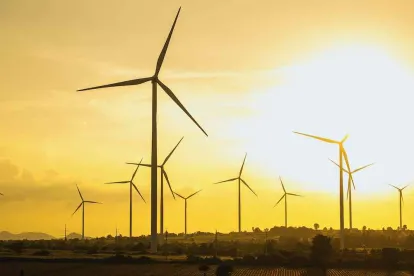Hours ago, US President Joe Biden signed a series of Executive Orders that aim to “confront the existential threat of climate change” in the United States, overseas and throughout the federal government while emphasizing job creation and tackling racial and environmental inequity. These order federal agencies to procure carbon-free energy, realign their fleet with electric vehicles, foster the commercialization of clean energy technologies, accelerate clean energy generation and transmission projects and ensure that disadvantaged communities get a fair share of the ensuing economic and environmental benefits. In signing these Executive Orders, President Biden has directed his administration to:
- Center the climate crisis in US foreign policy and national security considerations;
- Take a whole-of-government approach to the climate crisis;
- Leverage the federal government’s footprint and buying power to lead by example;
- Rebuild US infrastructure for a sustainable economy;
- Advance conservation, agriculture and reforestation;
- Revitalize communities; and
- Secure environmental justice and spur economic opportunity.
In Depth
Quick Takeaways
Today’s Executive Orders take bold steps to combat the climate crisis both at home and throughout the world and create a number of opportunities for developers, lenders and investors in the renewable energy space. The actions required by the Orders are broad and numerous. Our top 10 specific actions of the Orders are:
-
The establishment of the White House Office of Domestic Climate Policy and the establishment of a task force that will coordinate efforts among federal agencies.
-
The requirement that the secretary of the interior take steps for the US to double the amount of offshore wind in federal waters by 2030.
-
The requirement that all federal agencies procure carbon pollution-free electricity and clean, zero-emission vehicles to stimulate clean energy industries.
-
The initiation of the US process of developing the country’s emission reduction target under the Paris Agreement and its climate finance plan.
-
The requirement that climate considerations be included as an essential element of US foreign policy and national security, meaning that climate change, for the first time, will be a core part of all foreign policy and national security decisions.
-
The creation of a government-wide Justice40 Initiative with the goal of delivering 40% of the overall benefits of relevant federal investments to disadvantaged communities and tracks performance toward that goal through the establishment of an Environmental Justice Scorecard and the creation of a Civilian Climate Corps Initiative.
-
The direction to the secretary of the interior to pause on entering into new oil and natural gas leases on public lands or offshore waters.
-
The requirement that every federal infrastructure investment reduces climate pollution.
-
The direction that steps are taken to accelerate clean energy and transmission projects under federal siting and permitting processes in an environmentally sustainable manner.
-
The requirement that federal agencies work to eliminate fossil fuel subsidies as consistent with applicable law and identify new opportunities to spur innovation, commercialization and deployment of clean energy technologies and infrastructure.
Many of these actions will have an immediate and direct impact on the wind, solar and storage industries in the United States. While it may be up to further agency action or action by Congress to move these actions forward, those in the industry focused on offshore wind or solar or storage projects in underserved communities should expect full support from this administration. The 40% requirement is in underserved communities, meaning that demographics will play a vital role in ensuring equitable distribution of federal investments. This can create good-paying jobs and opportunities for small businesses in renewables, where opportunities have previously been scarce.
Additionally, the Order directs federal agencies to procure carbon pollution-free electricity and clean, zero-emission vehicles. This is likely to be the administration’s initial step to implement federal policy along the lines of the president’s campaign promise to direct federal energy purchases to clean power sources and to spend roughly $400 billion on the procurement of renewables, batteries and electric vehicles by the federal government. Under the administration’s current target, federal agencies would need to purchase enough US-made electric vehicles (EVs) to replace the approximately 645,000 vehicles it now owns.
Further, the Order also directs federal agencies to accelerate clean energy and transmission projects under federal siting and permitting processes. This follows the administration’s promises to streamline wind and solar projects on federal lands and could also apply to reforming federal transmission policies to accommodate the unprecedented growth in renewables that the Administration’s goals will require.
Our sense is also that this is the first on many Executive Orders or policy statements from this administration that we can expect to see directed at climate change and environmental justice. There are numerous tools that can further support the administration’s efforts, such as refundable tax credits, direct investment support, public-private partnerships and many others. It will be a test of the creativity of the industry and our government representatives. These Executive Orders are a statement that everything is on the table. Some incentives will need to work through Congress, and some won’t. What is clear is that private investment in the renewable space will have plenty of opportunities.
Deeper Dive
As set forth more fully in the White House Fact Sheet, in signing this Executive Order, President Biden has directed his administration to:
1. “Center the Climate Crisis in US Foreign Policy and National Security Considerations,” including:
-
Establishing climate considerations as an essential element of US foreign policy and national security.
-
Affirming that the US will exercise its leadership in implementing the Paris Agreement’s objectives.
-
Initiating the US process of developing the country’s emission reduction target under the Paris Agreement and its climate finance plan.
-
Directing the director of national intelligence to prepare a National Intelligence Estimate on the security implications of climate change.
-
Directing the State Department to prepare a transmittal package to the Senate for the Kigali Amendment to the Montreal Protocol.
-
Directing all agencies to develop strategies for integrating climate considerations into their international work.
-
Emphasizing that the president has created a new position, the special presidential envoy for climate, which will have a seat on the National Security Council.
-
Stating that the US will host a Leaders’ Climate Summit on Earth Day, April 22, 2021.
-
Stating that the US will reconvene the Major Economies Forum.
2. “Take a Whole-of-Government Approach to the Climate Crisis,” including:
-
Establishing the White House Office of Domestic Climate Policy (led by the first-ever national climate advisor and deputy national climate advisor), creating a central office in the White House that is charged with coordinating and implementing the president’s domestic climate agenda.
-
Creating the National Climate Task Force, assembling leaders from across 21 federal agencies and departments to enable a whole-of-government approach to combat the climate crisis.
3. “Leverage the Federal Government’s Footprint and Buying Power to Lead by Example,” including:
-
Directing federal agencies to procure carbon pollution-free electricity and clean, zero-emission vehicles to stimulate clean energy industries.
-
Requiring such procurements to be made in America, following President Biden’s earlier Buy American Executive Order
-
Directing agencies to apply and strictly enforce the prevailing wage and benefit guidelines of the Davis Bacon and other acts and encourage project labor agreements.
-
Directing each federal agency to develop a plan to increase the resilience of its facilities and operations to the impacts of climate change and directs relevant agencies to report on ways to expand and improve climate forecast capabilities.
-
Directing the secretary of the interior to pause on entering into new oil and natural gas leases on public lands or offshore waters to the extent possible, launch a rigorous review of all existing leasing and permitting practices related to fossil fuel development on public lands and waters and identify steps that can be taken to double renewable energy production from offshore wind by 2030.
-
Directing federal agencies to eliminate fossil fuel subsidies as consistent with applicable law and identify new opportunities to spur innovation, commercialization and deployment of clean energy technologies and infrastructure.
-
Directing federal agencies to double offshore wind in federal waters by 2030.
-
Directing the Department of the Interior to work on permitting, licensing and other issues that will result in a doubling of wind capacity in federal waters by 2030.
4. “Rebuild Our Infrastructure for a Sustainable Economy,” including:
-
Directing steps to ensure that every federal infrastructure investment reduces climate pollution and that steps are taken to accelerate clean energy and transmission projects under federal siting and permitting processes in an environmentally sustainable manner.
5. “Advance Conservation, Agriculture and Reforestation,” including:
-
Committing to the goal of conserving at least 30% of our lands and oceans by 2030 and launching a process for stakeholder engagement from agricultural and forest landowners, fishermen, Tribes, states, territories, local officials and others to identify strategies that will result in broad participation.
-
Calling for the establishment of a Civilian Climate Corps Initiative to put a new generation of Americans to work conserving and restoring public lands and waters, increasing reforestation, increasing carbon sequestration in the agricultural sector, protecting biodiversity, improving access to recreation and addressing the changing climate.
-
Directing the secretary of agriculture to collect input from farmers, ranchers and other stakeholders on how to use federal programs to encourage adoption of climate-smart agricultural practices that produce verifiable carbon reductions and sequestrations and create new sources of income and jobs for rural Americans.
6. “Revitalize Energy Communities,” including:
-
Establishing an Interagency Working Group on Coal and Power Plant Communities and Economic Revitalization, to be co-chaired by the national climate advisor and the Director of the National Economic Council.
-
Directing federal agencies to coordinate investments and other efforts to assist coal, oil and natural gas and power plant communities.
-
Directing the new Interagency Working Group to advance projects that reduce emissions of toxic substances and greenhouse gases from existing and abandoned infrastructure and that prevent environmental damage that harms communities and poses a risk to public health and safety.
-
Directing the new Interagency Working Group to explore efforts to turn properties idled in these communities, like brownfields, into new hubs for the growth of the US economy.
7. “Secure Environmental Justice and Spur Economic Opportunity,” including:
-
Formalizing President Biden’s commitment to make environmental justice a part of the mission of every agency by directing federal agencies to develop programs, policies and activities to address the disproportionate health, environmental, economic and climate impacts on disadvantaged communities.
-
Establishing a White House Environmental Justice Interagency Council and a White House Environmental Justice Advisory Council to prioritize environmental justice and ensure a whole-of-government approach to addressing current and historical environmental injustices, including strengthening environmental justice monitoring and enforcement through new or strengthened offices at the Environmental Protection Agency (EPA), Department of Justice and Department of Health and Human Services.
-
Creating a government-wide Justice40 Initiative with the goal of delivering 40% of the overall benefits of relevant federal investments to disadvantaged communities and tracking performance toward that goal through the establishment of an Environmental Justice Scorecard.
-
Initiating the development of a Climate and Environmental Justice Screening Tool, building off EPA’s EJSCREEN, to identify disadvantaged communities, support the Justice40 Initiative and inform equitable decision making across the federal government.






 />i
/>i

